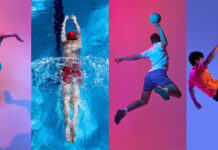Running is a fabulous sport that invigorates the body and mind, perhaps explaining why it is one of the most popular sports worldwide. But it is common for running goals to be derailed as runners face the greatest risk of sustaining an injury during their running careers. Injuries cause stress, discontent, isolation, and even injury depression, which explains the propensity to try to run through them.
Some runners are lucky enough to run a lifetime and hang up their running shoes when they choose to. However far too many stop running because their bodies give up, falling into the ‘I can’t run anymore’ camp. Chronic pain and repeated serious injuries put an end to the sport they once loved. For some this can be after a short time of running but more commonly it happens after years of running. The high risk of injury is due to the repetitive nature of running, overusing some muscles and underusing others. Areas of muscular weakness are glutes, upper body, back and core.
Joints create movement and healthy joints are strong and mobile to move through their full ranges of motion (ROM). Consider the hip joint, a ball-and-socket, multiaxial joint permitting a wide range of motion. Running, walking, or climbing stairs, offers a limited range, in one plane only, contributing to the common ‘tight/stiff hips’ ailment. Failure to move the joint through all the ranges will impair overall mobility of the joint and contribute to muscle imbalances that put the body at risk of injury. This same principle applies to all 250+ joints in the body. Moving joints through their specific ROM is beneficial for running as well as moving with ease through life’s daily activities.
Given that the number one reason people say they run is to stay healthy (Running USA’s National Runner Survey) it is worth examining what that means. It is outside the scope of this article to examine all aspects that comprise a ‘healthy’ body. However, it is safe to say that in addition to running free of pain, other daily movements should also be pain-free. For example:
• Get out of bed and walk upright without pain.
• Walk (or run) up and down stairs easily and without pain.
• Get up and down from a seat without pain.
• Sit and get up from the floor easily.
• Reach overhead and hold weight without restriction.
• Have the agility to move in unexpected ways, as in quickly stepping aside to avoid running into something.
To have longevity in the sport they love, runners would be wise to develop a smart plan to mitigate the risk of injury. Adding movement variability and including exercises that target multiple planes of movement should be part of weekly programming. This will help reduce the risk of injury and improve balance, stability, and athletic performance.
Here are three poses/exercises that will build strength in muscle groups that are commonly weak in runners, glutes, hamstrings, and core.
POSE/EXERCISE
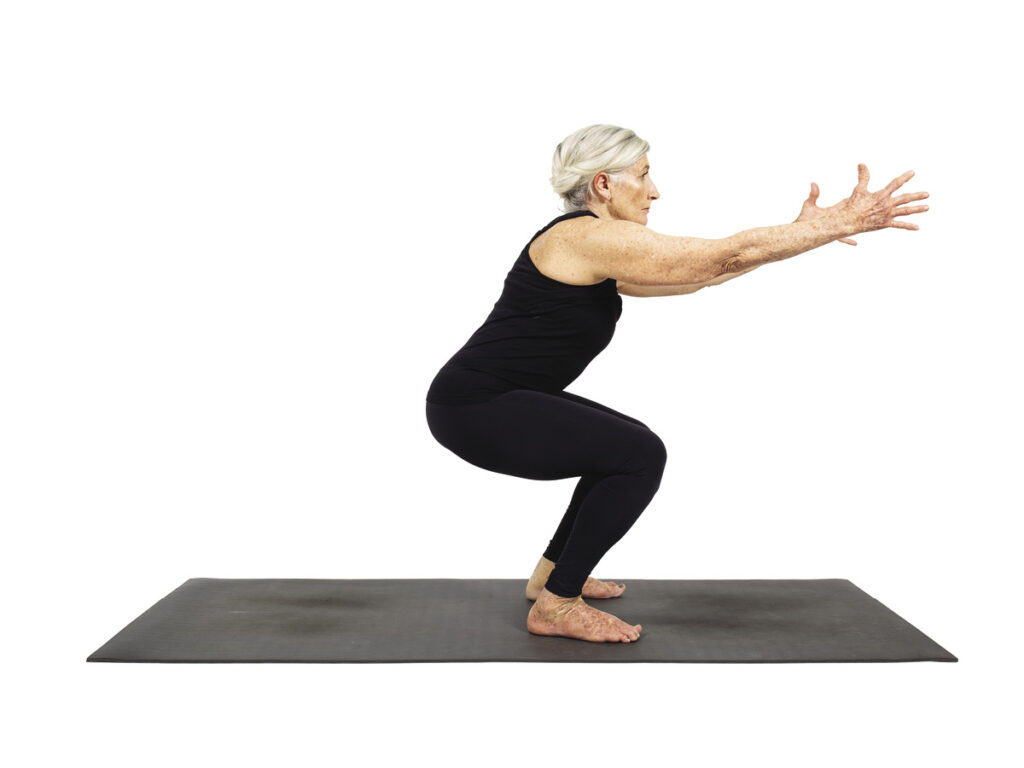
1. Basic Squat
TIPS
To lower, press hips back and keep knees over ankles. Keep torso upright instead of leaning forward. Lower slowly, pause, press into feet, and drive up through the hips to straight legs.
Repeat 3 sets of 10 reps.
BENEFITS
• Strengthens knees that supports the quads, hamstrings, glutes, ankles, and core
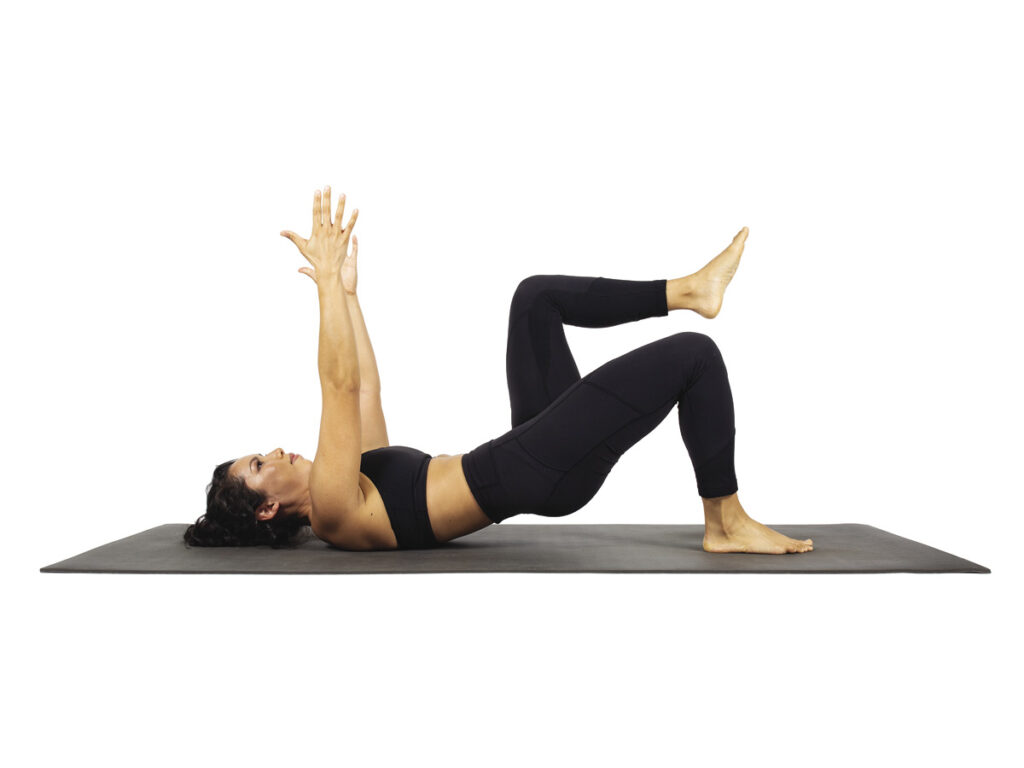
2. Glute Bridge
TIPS
Supine with feet hip-distance apart, arms by side or reaching up. Press feet to the floor, curl tailbone into posterior tilt and lift the hips while keeping lower-back ribs on the floor. Allow lower back to relax. Hold for several diaphragmatic breaths, repeat other side.
BENEFITS
• Strengthens glutes and hamstrings
• Relieves lower-back pain
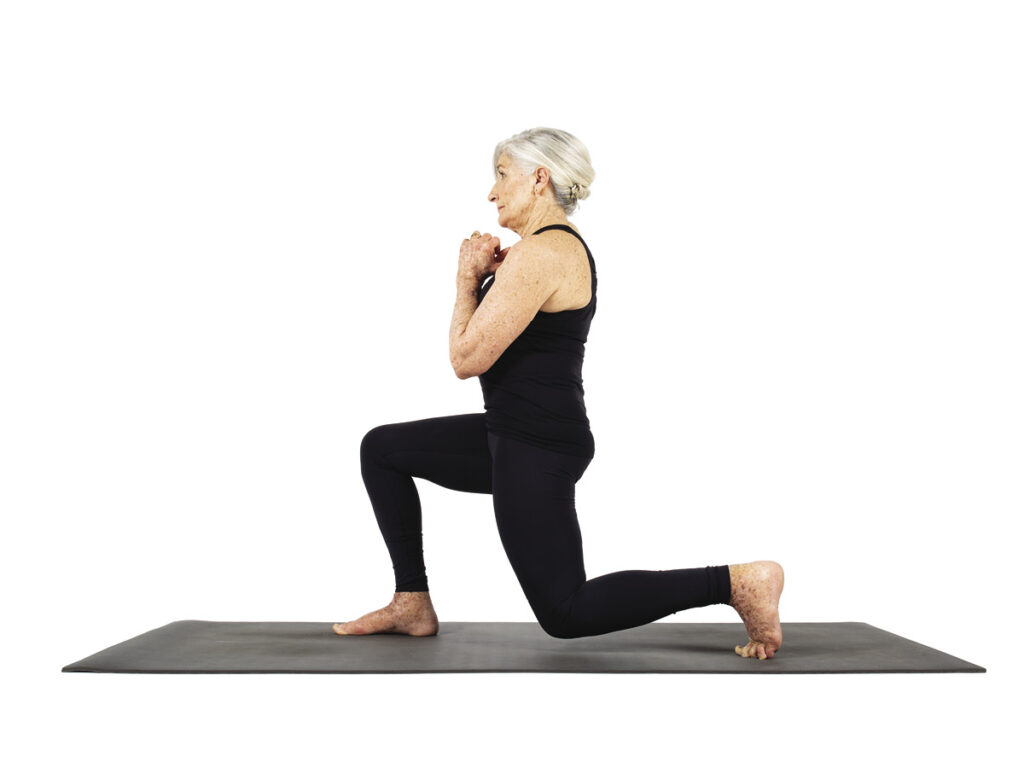
3. 90/90 Lunge Hover
TIPS
Kneeling position with front and back leg at 90 degrees. Stack shoulders, ribs and pelvis, drop tailbone to bring pelvis into posterior tilt. Curl toes under on back foot and, without leaning forward, lift knee to hover, aiming for one inch off floor.
BENEFITS
• Strengthens glutes, hamstrings, and core
• Mobilizes toe joints
Photography by House of Bonas
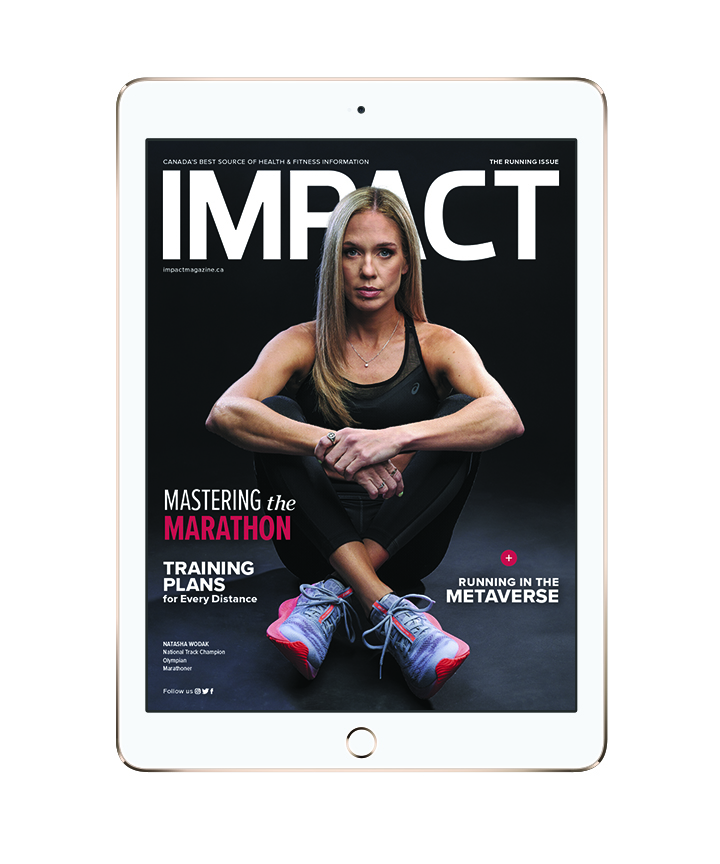
Read This Story in Our 2022 Running Digital Edition
2022 RACE SOURCE GUIDE. Training plans for every distance, yoga for runners, athletes with impact, running in the metaverse, recipes and much more!




